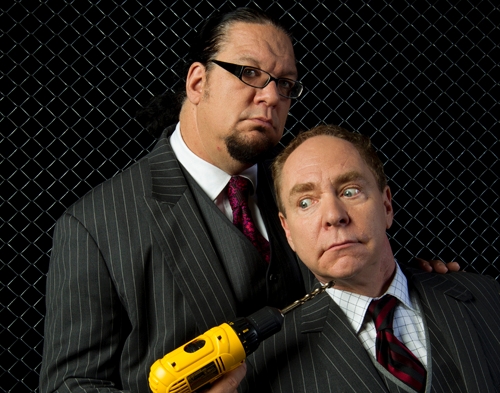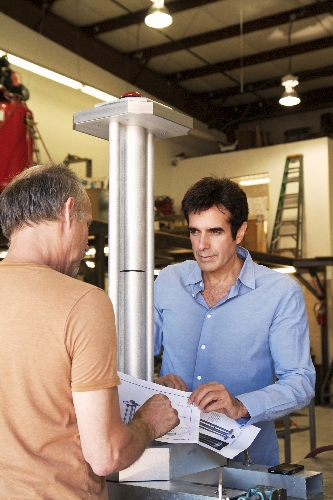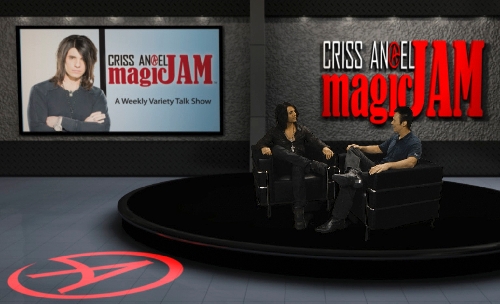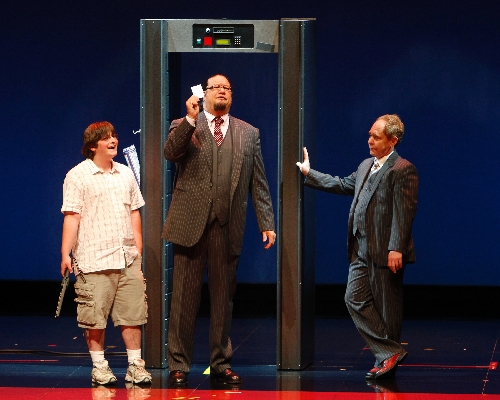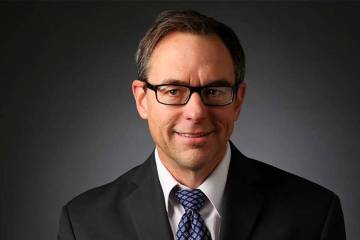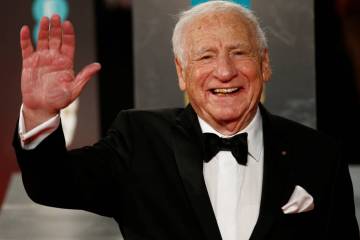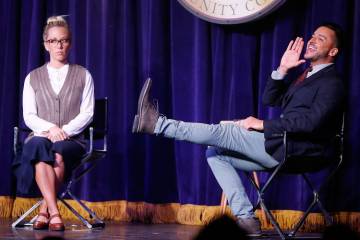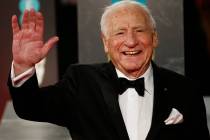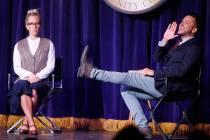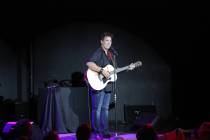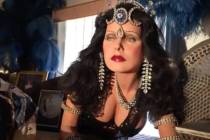Las Vegas magicians strive to bring innovation to field
It's a fair question: If there are so many magicians --1,200 of them hitting town Sunday -- why do we see so much of the same magic?
Why hasn't stage magic kept up with movies? Or our cellphones?
And the answer is fair, too: "It's a tremendously difficult art form," says Teller. "As hard an art form as you can find."
The silent (onstage, at least) half of Penn & Teller explains it like this: "You get the idea for a great piano piece, and then you have to invent the piano."
Moreover, "the songwriter is not fighting reality."
But Las Vegas makes a business of leaving reality behind, and its resident magicians make the Strip the pinnacle of the genre. After years of the same ol' levitations and women turning into white tigers, a stalled art form seems to be on the move again.
Penn & Teller now give us topical riffs on our shared love of our cellphones and hatred of airport security. Criss Angel plays the ancient shell game of cups and balls with real people under the cups, and makes a motorcycle selected by an audience member instantly appear.
Even the lower-budget shows can bring innovation: German magician Jan Rouven with a new-to-Las Vegas game of an audience member releasing swords that hang over his tied-down body.
"Magic Live!" runs Sunday through Wednesday at The Orleans and is touted as the largest gathering for the craft in North America. (It's closed to the public, but the featured "Carnival of Wonders" is open to all ticket-buyers Aug. 20 and 21.)
Stan Allen, whose Las Vegas-based Magic magazine is the hub of the annual convention, says it will feature cutting-edge work, such as "Technoillusionist" Marco Tempest demonstrating new tricks on iPhones and iPads.
Still, "Believe" star Angel says magic is, "in a lot of ways, really behind the times," and wagers an average person on the street would have trouble naming five magicians.
It's no coincidence, he adds, that the ones they are likely to name -- himself, David Copperfield and Penn & Teller -- all have different stage personas. "We do not look anything like each other, we don't use the same music. We are very, very different."
Beyond that top tier, Vegas stage shows and magicians with less means begin to blur into so many sequins. "They want no-brainers (for illusions), things they don't have to be concerned about. They use what is out there and has been mass produced," Angel says.
And with show business largely a pay-to-play proposition in Las Vegas, "some of the more artistic people out there are not generating the opportunity," says Northern Nevada-based Mark Kalin, the star of "Carnival of Wonders."
Las Vegas, Kalin argues, "should be a place that is pushing magic forward and setting some new standards."
Indeed, the top Las Vegas stars have a few luxuries in common: a staff, warehouse space and a standing gig on the Strip that eliminates the travel time of touring. It's reasonable to put the burden of innovation on them. And slowly but surely, they are delivering.
"I think for me, it's about how to tell the story in a different way where it feels different to the audience. The subject matter's different," Copperfield says.
After the veteran illusionist cut down on traveling this year to spend 40 weeks at the MGM Grand, he started inviting focus groups of as many as 100 audience members to stay after the show and watch new illusions. "Eventually, I'll have a good hour of material that's really been written by me and the audience," he says.
One features a narrative built around a young girl during the Holocaust. "In a Las Vegas magic show, right?" he chuckles. "Well, that's the risk."
The problem, Copperfield says, is "finding a new voice that the audience understands is a new voice. It's not just combing your hair differently or dressing differently."
Asked why stage magic hasn't kept up with movie-magic technology such as "Avatar," Copperfield points out that "Jumanji" came first. "It was a slow ramp-up. It didn't happen overnight."
"You're never going to see an entire flip of the whole medium," Copperfield says. But he does believe in "little changes," that "feel different at the end of the day."
Teller agrees magic must follow laws of physics as old as theater. "The way you screw around with somebody's perception in the theater is not dramatically changed from the way it would have been 200 years ago," he says. "Those rules remain more or less the same."
"There are still people developing new material, but it's difficult," says Bill Smith, whose Las Vegas-based Magic Ventures has collaborated with most Las Vegas headliners, including Copperfield, Lance Burton, Rick Thomas and Nathan Burton.
"I've been at this so long, all the principles I know. Every so often a new principle comes along, but not very often."
Angel's motorcycle appearance resembles the one Copperfield used as a show opener back in his Caesars Palace days, "but Criss' method is different. And it's very good," Smith says.
"It's perseverance, it's trying to do something different," Angel says, "embracing the history of magic and the old methods, but also looking at new methods and how you can combine both, if need be, to create something that has the look and the feel of something we haven't seen before."
And Teller says it's worth it. "The unique joy is when the audiences sees something that seems to be real that they know isn't real. That collision is fantastic. It's fantastically intense."
Contact reporter Mike Weatherford at mweatherford@ reviewjournal.com or 702-383-0288.



